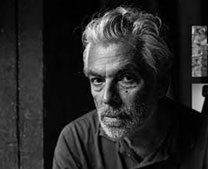


Off the Main Road!

The Tafaseel web documentary magazine, see below, asked me to write an article for their first edition. Here it is:
3 months per year I am away from home. I travel in and outside Europe to talk about documentaries, the market, the television slots and strands, the film funds, the festivals, how to write proposals and make trailers that work. Or I organise and moderate pitching sessions and invite TV people – commissioning editors – to come and comment on new proposals. I have done so more or less since the EU in the beginning of the 1990’s introduced the MEDIA Programme, a support mechanism that has meant a lot, and still does, for the international cooperation and coproduction for the documentary. 20 years later you see the results, for the good and the worse. First the good, and then the but…
Whenever possible on my tours around I show examples of successful films that were made within the coproduction, international documentary world. Where so-called creative documentaries mostly are human interest stories, and/or with political, social, environmental issues conveyed in a professional, appealing, debate creating way. For the heart and the brain.
I show the trailer of ”Caviar Connection” by Dragan and Jovana Nikolic from Serbia, who at the EU-supported IDFA forum some years ago got the biggest applause for their project presentation as well as a lot of interest from broadcasters and distributors. I show a clip from ”Blind Loves” by Slovak Juraj Lehotsky, who developed his film project through the EU-supported Ex Oriente training programme into a film that went to Cannes and won a prize at the festival. I show a clip from ”Good Bye, How are You” by another Serbian director, Boris Mitic, who travelled the pitching fora and the festivals to raise funding for his film. I show a clip from Macedonian Atanas Georgiev’s ”Cash and Marry”, that started as a Croatian based production but got an Austrian producer to help get EU- and other money. And I don’t let young filmmakers leave the room without having seen LaTVian Herz Frank’s 1978 masterpiece, ”10 Minutes Older” – at a time where there was no EU-funding, during USSR, where LaTVian capital Riga was the place for the free poetic documentary reflection.
All these films – from Eastern Europe – have one thing in common, as it has been said by BBC’s Nick Fraser: They come from countries where television has no money for documentaries, and therefore has had no (bad) influence! Was this a self-criticism from a man who for years have been running the prestigious TV strand Storyville? Knowing Fraser, I doubt it, but on the other side, his statement gives a very precise, indirect characterisation of the disease that threatens the creative documentary, the formatted TV. Which, to be fair, Fraser does not stand for.
The films that I mention above are exceptions from the rules. Most of the documentaries made for television today are made according to non- creative standard rules for duration, storytelling, rhythm in editing, voice-off and approach to controversial subjects. You know very well what I talk about – a historical film for example, from BBC and/or German ZDF looks like this: Black and white archive material, a commentary that explains what you see or adds a lot of information in a flow of words that kill the visual impact, interviews with witnesses and/or experts, voilá, that is the menu and we eat it most often with pleasure.
The films mentioned above have followed some of these rules but they have also kept their own voice, and thus they surprise the viewer.
Wow, can films also be like that!
Well, some of them have been involved in fights with the TV editors, who – sorry to say – often claim to know that this will not be understood by their audience. This is too artistic for my audience… is a sentence that I have heard again and again. Read it again, please, ”too artistic!”. Excuse my French, but f… you!
When ”Caviar and Connection” got a huge applause at IDFA it was precisely because the presentation and the project were off-the-main- road, originally thought and presented with a special sense of humour. It was simply different and the editors around the table loved it as I am sure that the viewers did in the respective countries, who bought the film when done. We want to be surprised, we want to experience something new, we want to be challenged, don’t we? Don’t ever underestimate the audience! Don’t ever try to please!
Follow your own artistic ambition! Build up a documentary culture in your country (Finland is still the example with a film school, several financing sources to access, a film festival, in other words a respect for the documentary genre as an important cultural element)! Set the filmmakers free – re-enter some Dadaism and surrealism, and keep the good will and the political correctness for other TV programmes!
… OR if you use ”formatting”, make it clear that this is an aesthetic choice and not a demand. James Marsh’s ”Man on Wire” is maybe the best example in that category – playful, genre- conscious, a thriller but also a human story, multi-layered, or Agnes Varda who is completely her own in the autobiography, ”The Beaches of Agnes”, elegantly playing with the genres. Or ”Burma vj” by Anders Østergaard, who brings political archive material into a fictitious frame. Or ”Nénette” by Nicholas Philibert who brings an ultra-observational choice (of a 40 year old orangutang) into a philosophical essay.